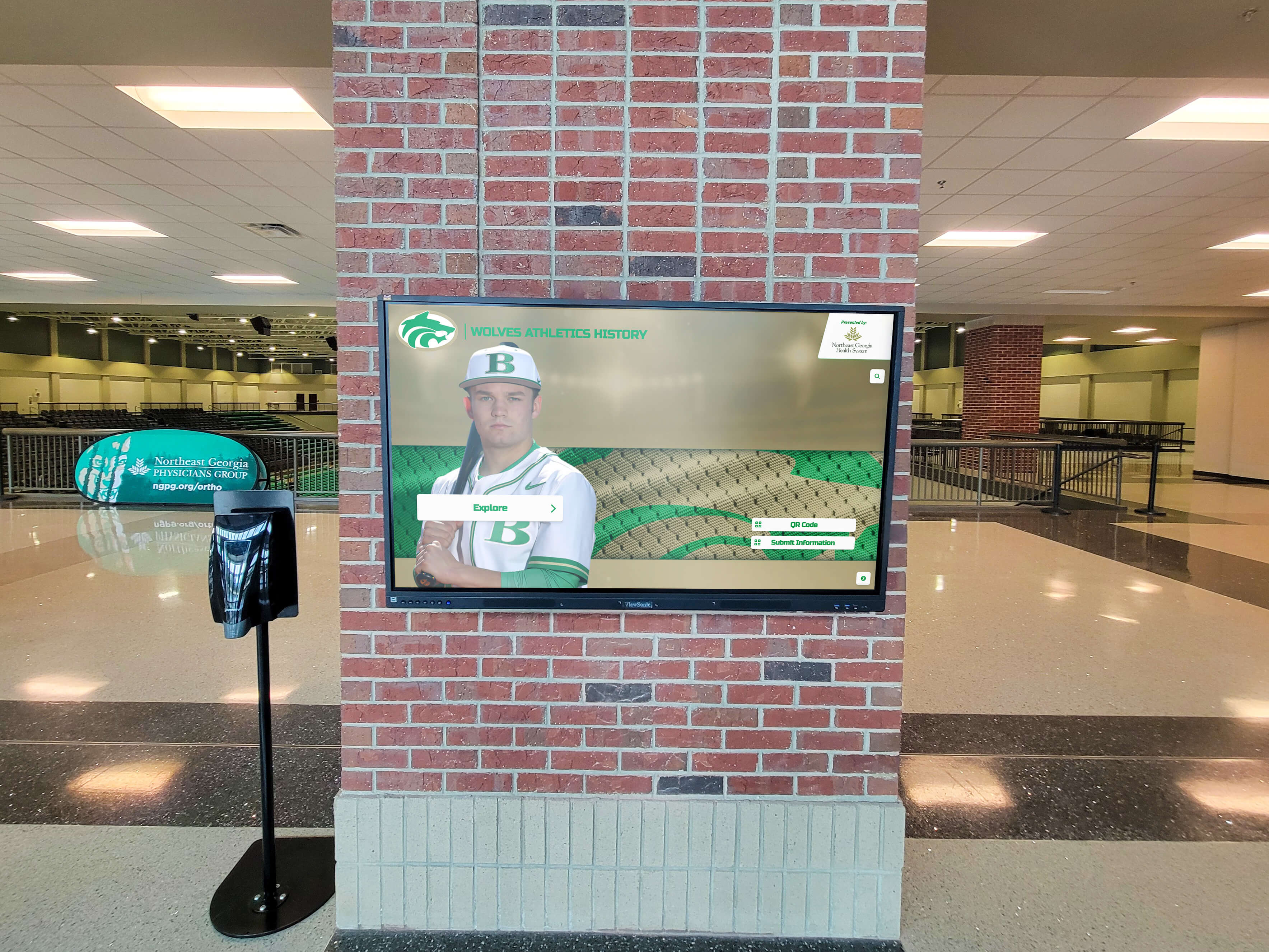Soccer alumni games represent cherished traditions where former players return to their alma maters, rekindling friendships, sharing memories, and demonstrating the enduring bonds forged through years of competition and teamwork. These annual or biennial gatherings create powerful moments when current players meet distinguished alumni, generations of soccer players connect across decades, and communities celebrate their soccer program heritage. Behind every alumni game lies a rich archive of photographs, statistics, and stories documenting the program’s evolution from its earliest days through current seasons.
Preserving soccer program heritage through comprehensive photo archives and modern recognition systems ensures that these legacies remain accessible to current players, future generations, and entire communities. As schools and organizations embrace digital transformation, many discover that modern recognition displays offer compelling advantages for celebrating soccer excellence while maintaining accessible archives that strengthen program identity and alumni engagement.
Why Soccer Alumni Games and Photo Archives Matter
Soccer programs build identity through decades of competition, player development, and community connection. Alumni games celebrate this continuity by bringing together multiple generations of players who share common experiences of training, competition, and team bonding. Comprehensive photo archives preserve these memories permanently while recognition systems like those from Rocket Alumni Solutions make historical content easily accessible, searchable, and engaging for current players, alumni, and supporters who want to explore their program's rich heritage.
The Tradition of Soccer Alumni Games
Soccer alumni games have become integral traditions at high schools, universities, and club organizations worldwide, creating annual touchpoints that maintain connections between programs and graduated players.
Building Multi-Generational Connections
Alumni games uniquely bring together players across age ranges and eras who share fundamental bonds despite graduating decades apart:
Shared Identity and Common Experience: Regardless of when they played, alumni share experiences of representing their school or club, competing in meaningful matches, training under demanding conditions, and forming friendships through soccer. These common experiences create instant connections when alumni gather, even when they never played together.
Mentorship and Role Modeling: Current players benefit immensely from interacting with alumni who have navigated transitions from high school or college soccer to adult life. Alumni share insights about balancing academics and athletics, overcoming injuries, maintaining fitness beyond competitive careers, and leveraging soccer experiences in professional contexts.
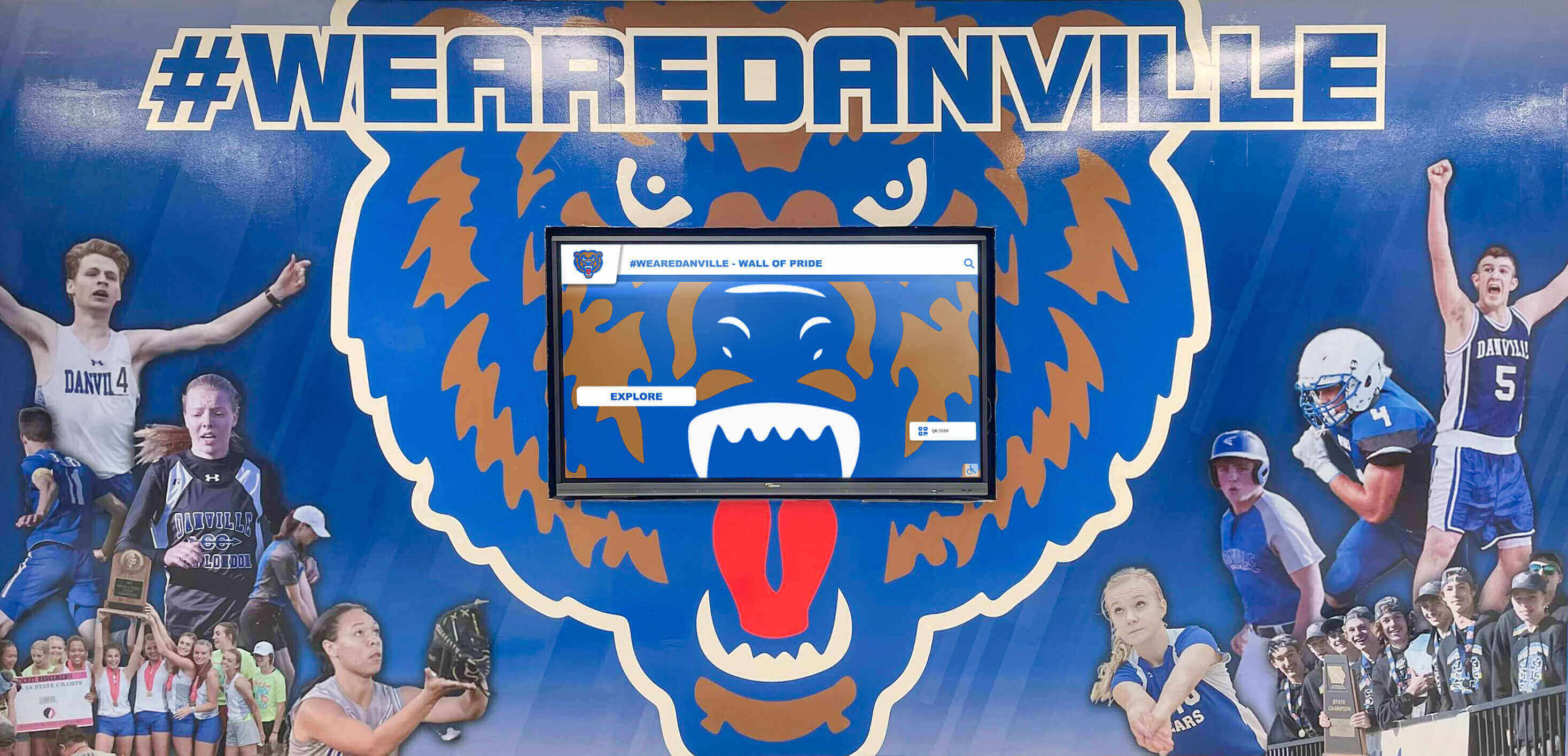
Family Legacy Preservation: Multi-generational families with soccer traditions—parents, children, grandchildren who all played for the same program—find alumni games particularly meaningful. These events create opportunities for families to celebrate shared heritage while introducing younger generations to the program history they’re inheriting.
Program Culture Transmission: Alumni games help transmit program values, traditions, and expectations across generations. Current players observe how alumni conduct themselves, hear stories about program history, and understand the standards they’re expected to uphold as future alumni themselves.
Insights on celebrating multi-generational families through digital recognition demonstrate how recognition systems strengthen these cross-generational connections by documenting family legacies within soccer programs.
Strengthening Alumni Engagement and Program Support
Beyond the enjoyment of playing together again, alumni games serve strategic purposes that benefit programs substantially:
Maintaining Active Alumni Networks: Regular alumni games keep graduated players engaged with programs long after their playing careers end. These maintained connections create alumni communities more likely to provide volunteer support, mentorship, donations, and advocacy that sustain program excellence.
Fundraising Opportunities: Many programs coordinate alumni games with fundraising initiatives—registration fees, merchandise sales, donation drives, sponsorship opportunities—that generate revenue supporting program operations, equipment purchases, facility improvements, or scholarship funds.
Recruitment and Program Visibility: Alumni games showcase program culture and traditions to prospective players and families. The visible evidence that programs maintain strong alumni relationships and that former players value their experiences creates positive impressions during recruitment.
Community Engagement: Alumni games attract spectators beyond current families—alumni relatives, community members, local soccer enthusiasts—expanding program visibility and strengthening community connections that provide support in various forms.
Volunteer Development: Alumni who return for games often become volunteers supporting programs in other capacities—coaching assistance, referee work, facility maintenance, administrative help—multiplying program capacity through engaged former players.
Resources on best practices for connecting with alumni provide frameworks for leveraging alumni games within comprehensive engagement strategies that maintain strong relationships with graduated players.
Creating and Maintaining Soccer Photo Archives
Comprehensive photo archives documenting soccer program history serve multiple purposes while creating valuable resources that enrich recognition programs and strengthen institutional memory.
Historical Documentation and Preservation
Soccer programs accumulate rich visual histories spanning decades of competition, player development, and community connection:
Team Photos and Season Documentation: Annual team photos provide visual records of every roster, documenting players, coaches, and support staff across program history. These systematic records become increasingly valuable as years pass, serving as definitive documentation of who participated during specific seasons.
Game Action and Competition Photography: Action photographs capture the intensity, skill, and emotion of competition—goals scored, defensive stands, celebrations, disappointments—preserving moments that statistics alone cannot convey. These images document playing styles, field conditions, uniform evolution, and competitive contexts across eras.
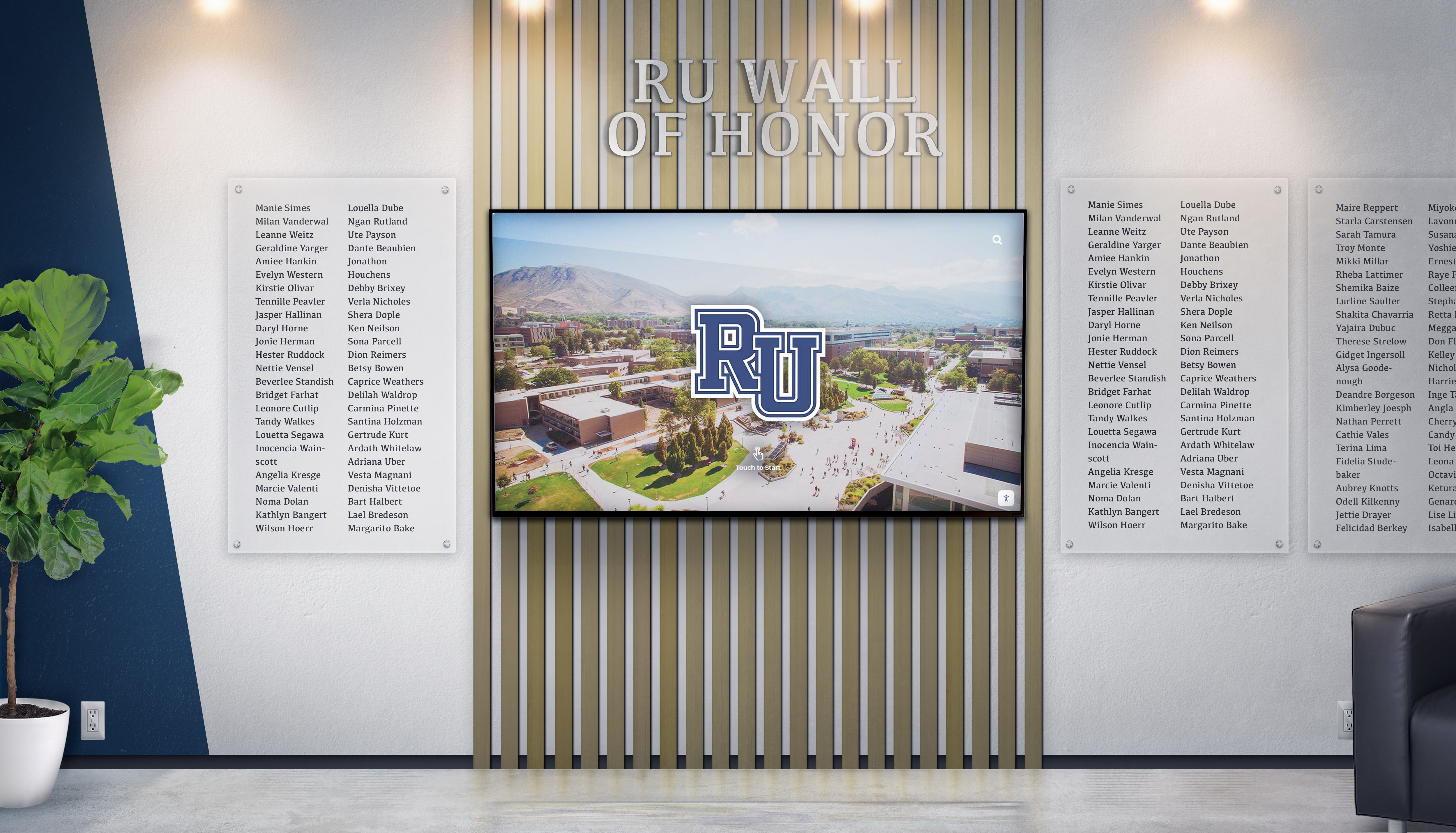
Behind-the-Scenes and Practice Images: Photographs documenting practices, team bonding activities, travel experiences, and informal moments reveal program culture beyond game results. These images capture relationships, work ethic, team chemistry, and everyday experiences that define what it means to be part of the program.
Facility and Equipment Evolution: Historical photos documenting field conditions, locker rooms, training equipment, and facilities across decades provide tangible evidence of program development and institutional investment in soccer excellence.
Championship and Achievement Documentation: Special attention to championship seasons, tournament successes, and milestone achievements ensures that peak moments receive appropriate photographic documentation preserving these accomplishments for future generations.
Guidance on digitizing yearbooks and historical materials helps programs systematically preserve soccer program history through organized digital archives accessible to current and future stakeholders.
Organizing and Digitizing Photo Collections
Raw photo collections provide limited value without organization systems making content easily discoverable and accessible:
Systematic Organization Frameworks: Effective archives organize photos by multiple criteria—chronological ordering by season and date, categorical organization by photo type (team photos, action shots, events), player-focused collections grouping images by individual athletes, and achievement-based organization highlighting championships and milestones.
Metadata and Tagging Systems: Rich metadata transforms photos from unidentified images to well-documented historical records. Comprehensive tagging includes dates and seasons, player identification naming individuals visible in photos, opponent and venue information providing context, photographer attribution crediting image sources, and descriptive keywords enabling search and discovery.
Digital Scanning and Preservation: Historical photographs printed on paper deteriorate over time through fading, physical damage, and environmental factors. Professional scanning digitizes photos at high resolution, ensuring permanent preservation while enabling easy access without handling fragile originals.
Backup and Redundancy: Digital archives require proper backup systems protecting against data loss. Best practices include multiple backup locations storing copies in different physical locations, cloud storage providing off-site backup and accessibility, version control tracking changes to collections, and regular backup verification ensuring recovery systems work properly.
Accessibility and Rights Management: Clear policies about who can access archives, download images, and use photos publicly protect privacy while enabling appropriate sharing. Systems might include public galleries accessible to anyone, password-protected sections for alumni only, permission systems requiring approval for public use, and privacy controls restricting images of minors.
Resources on photo management software for communities explore digital asset management solutions that help soccer programs organize and share extensive photo collections effectively.
Leveraging Archives in Recognition Programs
Photo archives become most valuable when integrated into recognition systems that make historical content engaging and accessible:
Profile Integration: Individual player profiles in recognition systems benefit enormously from archived photographs showing athletes during their playing careers, creating visual connections to written biographical content and statistical records.
Historical Timelines: Photo galleries organized chronologically create visual timelines documenting program evolution across decades, enabling visitors to explore how teams, uniforms, facilities, and playing styles changed over time.
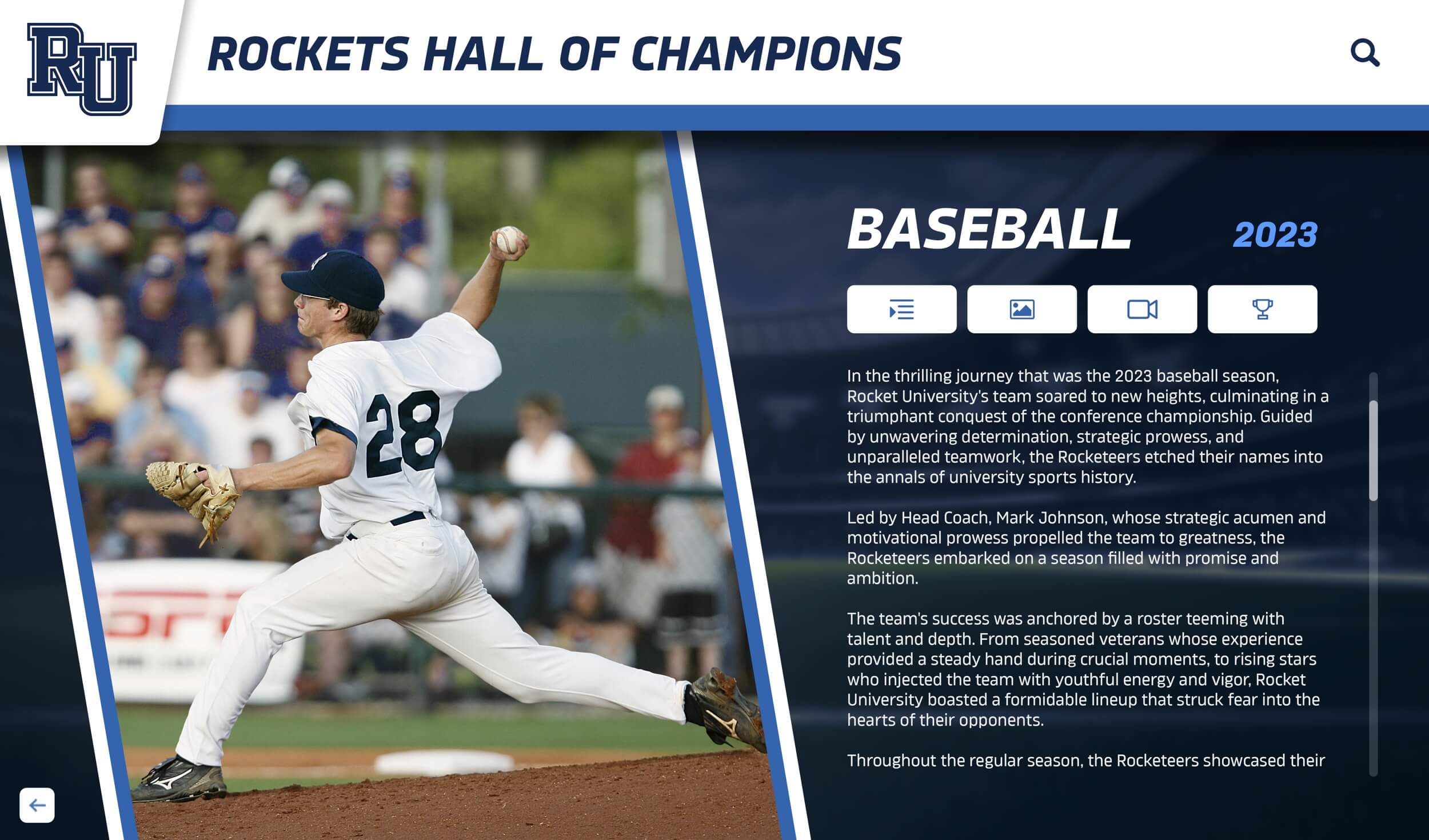
Searchable Collections: Advanced search functionality allowing visitors to find photos by player name, season, opponent, location, or keyword transforms archives from static collections to dynamic resources supporting exploration and discovery.
Social Sharing Integration: Enabling alumni to easily share historical photos through social media extends archive reach while creating organic engagement as alumni tag classmates, share memories, and generate conversations around historical images.
Print-on-Demand Services: Some programs offer services allowing alumni to order physical prints of archived photos for personal collections, creating revenue opportunities while ensuring alumni can preserve personal memories from their playing careers.
Modern Recognition Solutions for Soccer Programs
Digital recognition displays transform how soccer programs celebrate achievements, preserve history, and engage alumni communities through interactive, accessible platforms.
Comprehensive Player and Team Recognition
Modern recognition systems accommodate unlimited content celebrating diverse achievements across program history:
Individual Player Profiles: Detailed profiles document every significant contributor to program history including biographical information and playing career details, statistical achievements and performance records, awards and honors received, post-graduation updates and career paths, and personal reflections and memorable moments shared by players themselves.
Team Achievement Documentation: Comprehensive team records celebrate collective success through season records and championship victories, tournament results and playoff achievements, rivalry game histories and notable victories, statistical leaders and record-setting performances, and coaching staff recognition acknowledging leadership contributions.
Historical Record Boards: Digital record boards tracking all-time leaders across statistical categories create competitive motivation for current players while honoring past excellence. Categories might include career goals and assists, single-season scoring records, consecutive games played, shutout records for goalkeepers, and defensive statistics and headers won.
Alumni Career Highlights: Recognition extending beyond high school or college careers documents what alumni accomplished subsequently—professional or semi-professional playing careers, coaching and referee career achievements, soccer-related business or organizational leadership, and continued involvement in soccer communities.
Schools implementing comprehensive sports recognition should explore soccer record boards as part of broader athletic recognition strategies celebrating achievements across all sports programs.
Interactive Exploration and Discovery
Modern touchscreen displays enable engaging exploration that passive plaques cannot match:
Intuitive Search Capabilities: Visitors can quickly find specific content through name-based searches locating individual players instantly, year and era filters exploring specific time periods, position-based browsing finding all goalkeepers or defenders, achievement filtering discovering record holders and award winners, and keyword searches enabling thematic exploration.
Rich Multimedia Content: Beyond static text, digital systems integrate photographs showing players during their careers and presently, video highlights featuring memorable goals and game footage, interview content with alumni reflecting on experiences, statistical visualizations displaying performance data graphically, and document archives preserving newspaper clippings and awards.

Related Content Connections: Sophisticated systems link related content enabling seamless navigation—from player profiles to team rosters they appeared on, from team seasons to individual player achievements, from coaches to players they developed, and from statistical records to athletes who set them.
Customizable Display Options: Different viewing preferences accommodate diverse audiences through list views showing many results simultaneously, gallery formats emphasizing visual content, timeline presentations organizing content chronologically, and statistical leaderboards highlighting competitive achievements.
Comprehensive guidance on interactive touchscreen software for recognition ensures soccer programs select systems providing discovery capabilities that maximize alumni exploration and engagement.
Accessibility and Remote Engagement
Recognition systems reach far beyond physical campus locations through web and mobile platforms:
Global Web Access: Alumni living anywhere worldwide can explore program history through responsive web platforms optimized for all devices, mobile applications providing dedicated app experiences, social media integration enabling easy sharing, and embedded content appearing on team websites.
Alumni Event Integration: Recognition platforms support alumni games and reunions through pre-event promotion encouraging exploration before attending, on-site display stations providing interactive touchpoints during events, live streaming integration connecting remote alumni, and post-event engagement maintaining momentum after gatherings.
Ongoing Communication Touchpoints: Programs leverage recognition content in regular communications including alumni newsletter features highlighting historical content, social media posts celebrating anniversary milestones, email campaigns promoting newly added profiles, and reunion announcements featuring graduating class content.
Collaborative Content Development: Enabling alumni to contribute content enriches archives through photo submissions adding to historical collections, biographical updates sharing post-graduation achievements, memory submissions providing personal reflections, and crowdsourced information filling historical gaps.
Resources on high school reunions and digital engagement explore strategies for integrating recognition platforms into comprehensive alumni engagement programs including soccer-focused gatherings.
Planning Successful Soccer Alumni Games
Effective alumni games require thoughtful planning ensuring events achieve multiple objectives while creating memorable experiences for participants and spectators.
Event Format and Structure Considerations
Alumni game formats vary based on program size, participant age ranges, and event objectives:
Game Structure Options: Programs might organize current team versus alumni team matches creating competitive games, alumni-only matches dividing participants by graduation decade, skills competitions and challenges emphasizing fun over competition, hybrid formats combining multiple game types, or exhibition formats featuring demonstrations and skills showcases.
Age and Ability Accommodations: Successful events accommodate diverse fitness levels through modified rules reducing injury risk for older players, time limits and substitution systems ensuring everyone participates, separate divisions grouping similar age ranges, non-competitive activities for those unable to play competitively, and inclusive formats welcoming players of all abilities.
Scheduling and Duration: Optimal event timing balances multiple factors including coordination with current season schedules, selection of times when most alumni can attend, duration appropriate to participant fitness levels, weather considerations for outdoor events, and integration with other alumni activities or homecoming celebrations.

Supporting Activities: Beyond the game itself, successful events often include facility tours showing program improvements, recognition ceremonies honoring distinguished alumni, social time enabling networking and conversation, refreshments and meals facilitating community building, and fundraising components supporting program needs.
Insights on engaging with local communities through athletics demonstrate how alumni games function as community-building events that strengthen relationships between soccer programs and broader constituencies.
Promotion and Communication Strategies
Effective promotion ensures strong attendance and participation:
Multi-Channel Outreach: Comprehensive communication uses email campaigns reaching all alumni with contact information, social media posts creating visibility and discussion, website features providing details and registration, direct mailings targeting recent graduating classes, and personal outreach by coaches recruiting specific participants.
Early and Persistent Communication: Promotion timelines should begin months in advance with initial announcements generating awareness, regular reminders maintaining interest, registration deadline notifications creating urgency, week-before confirmations ensuring participants remember, and day-of logistics helping everyone arrive prepared.
Compelling Messaging: Effective promotional content emphasizes nostalgia and reunion opportunities reconnecting with teammates, competitive appeal for those wanting to play again, family-friendly atmosphere welcoming spouses and children, program support framing participation as giving back, and ease of participation lowering barriers to attendance.
Registration and Planning Tools: Modern event management might include online registration systems capturing participant information, t-shirt or uniform orders creating keepsakes, liability waivers protecting programs legally, dietary preferences for meal planning, and alumni directory updates gathering current contact information.
Implementation Considerations for Soccer Recognition Systems
Programs implementing or enhancing soccer recognition systems should consider strategic and technical factors ensuring successful outcomes.
Content Development and Historical Research
Creating comprehensive recognition content requires significant investment in research and content creation:
Historical Data Collection: Systematic research uncovers information about program history through yearbook reviews documenting teams and players, newspaper archive searches finding game coverage and features, statistical compilation gathering performance records, coaching staff interviews capturing institutional memory, and alumni outreach requesting information and photos.
Profile Development Standards: Consistent approaches to biographical content ensure quality and completeness through standardized profile templates maintaining uniformity, minimum information requirements ensuring adequate depth, photo quality guidelines maintaining visual standards, video production standards for interview content, and editorial review processes ensuring accuracy.
Ongoing Maintenance Protocols: Recognition systems require sustained attention through annual updates adding graduating seniors, alumni achievement updates incorporating post-graduation accomplishments, historical expansion systematically covering earlier eras, photo archive additions continuously building collections, and correction processes addressing errors or outdated information.
Alumni Participation Encouragement: Engaging alumni in content development multiplies program capacity through information submission portals collecting biographical updates, photo contribution systems accepting historical images, memory sharing invitations gathering personal reflections, profile verification allowing alumni to review content, and acknowledgment programs recognizing contributors.
Resources on content strategies for digital recognition provide frameworks for developing comprehensive soccer program content that engages diverse audiences effectively.
Technology Selection and Integration
Appropriate technology ensures reliable operation and exceptional user experiences:
Platform Capabilities: Effective recognition systems should provide intuitive content management allowing easy updates, flexible organization accommodating program-specific needs, multimedia support integrating photos and videos, robust search functionality enabling quick discovery, responsive design working across all devices, and reliable performance handling concurrent users.
Hardware Considerations: Physical display installations require commercial-grade touchscreen displays designed for continuous operation, appropriate screen sizes for viewing distances and spaces, durable enclosures protecting equipment, professional mounting ensuring security, and adequate network connectivity supporting content delivery.
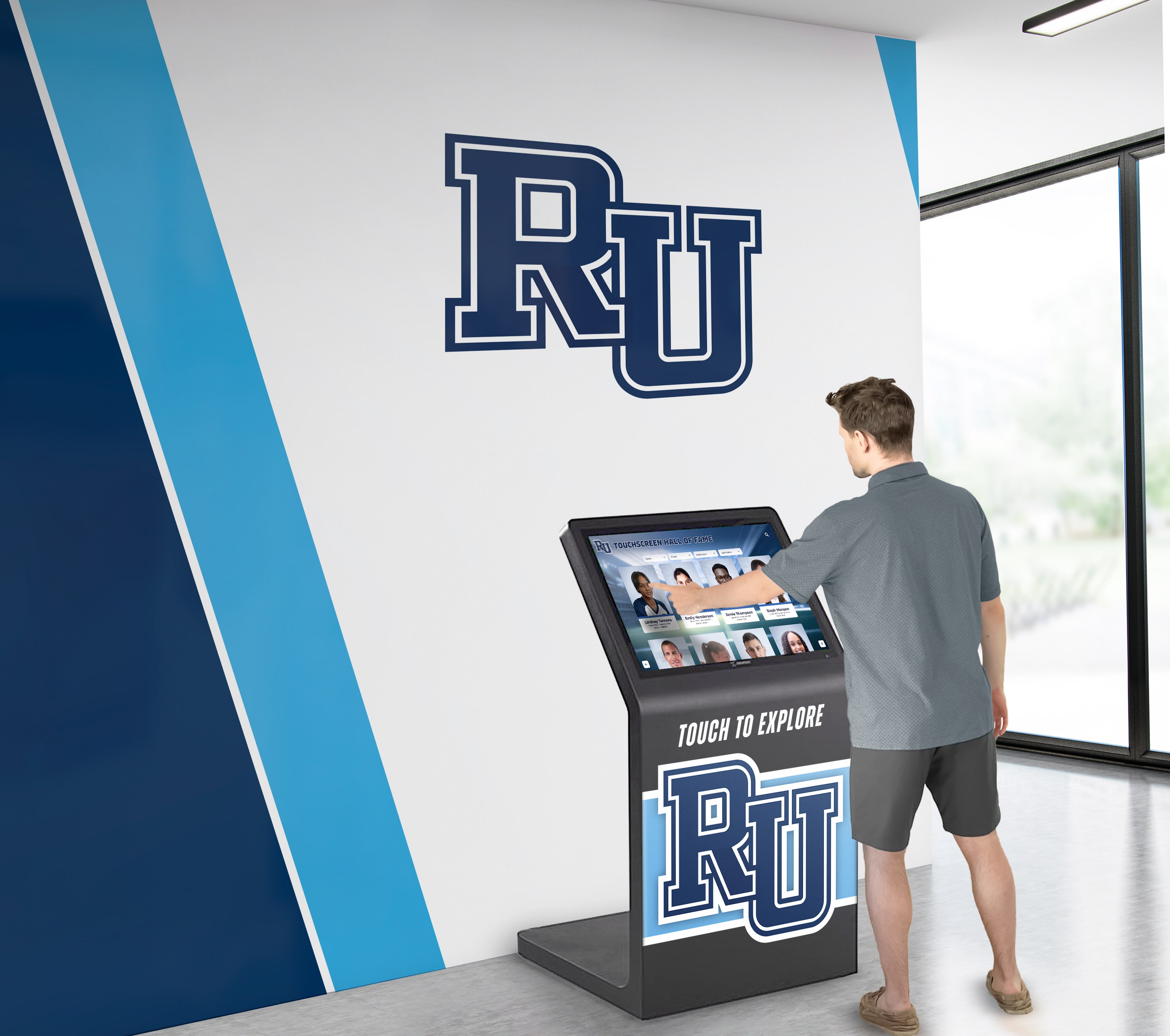
Integration Requirements: Recognition systems may connect with existing school systems and websites, student information databases, social media platforms enabling sharing, email systems for communications, and analytics platforms tracking engagement.
Support and Maintenance: Long-term success depends on technical support from platform providers, training for staff administrators, documentation explaining system features, backup and recovery systems protecting content, and software updates maintaining functionality.
Guidance on choosing athletic record board systems helps soccer programs evaluate options and make technology decisions aligned with their specific needs and resources.
Budget and Resource Planning
Recognition system implementation requires realistic resource planning:
Initial Investment Components: Upfront costs typically include platform licensing or subscription fees, hardware purchases for physical displays, professional installation services, content development investments, training and onboarding support, and integration work if needed.
Ongoing Operating Expenses: Sustained operations require annual platform fees or subscriptions, content maintenance and updates, technical support and troubleshooting, hardware maintenance and occasional replacement, and staff time for administration.
Funding Strategies: Programs finance recognition systems through capital campaigns specifically for recognition, donor naming opportunities for components, alumni contributions during reunion campaigns, booster club support and fundraising, and institutional budget allocations.
Phased Implementation Approaches: Budget-conscious programs might start with web-only platforms before adding displays, begin with single physical display expanding gradually, launch with recent content expanding historically, or implement basic features adding advanced capabilities later.
Best Practices for Soccer Program Recognition
Programs achieving greatest success with recognition and alumni engagement follow practices that maximize impact while ensuring sustainability.
Inclusive Recognition Philosophy
Effective programs honor diverse contributions and achievements:
Beyond Star Players: Recognition extending beyond leading scorers and all-conference selections acknowledges role players and team contributors, long-service players showing sustained commitment, leadership and character exemplars, players overcoming significant obstacles, and alumni supporting programs post-graduation.
Multiple Achievement Categories: Diverse recognition types celebrate athletic excellence and on-field achievement, academic success and scholar-athletes, character and sportsmanship recognition, coaching and staff contributions, and alumni accomplishments post-graduation.
Equitable Historical Coverage: Balanced representation across program history ensures recent players and current awareness, mid-career alumni often underrepresented, historical figures and program founders, women’s and men’s programs receive equal emphasis, and diverse demographics see themselves represented.
Community and Family Engagement
Recognition systems serve entire communities beyond individual athletes:
Family Recognition: Acknowledging support systems honors parents and guardians supporting athletes, siblings who attended games, extended families providing encouragement, and multi-generational soccer families.
Supporter Acknowledgment: Comprehensive recognition celebrates volunteer coaches and assistant staff, booster club members and donors, community sponsors and partners, game officials and volunteers, and facility maintenance and support staff.
Youth Program Connections: Linking high school or college programs with youth organizations creates pipeline recognition celebrating youth coaches feeding programs, youth player progression tracking development, and community soccer ecosystem documentation showing connected organizations.
Resources on honoring community accomplishments through recognition explore frameworks for creating inclusive recognition programs that celebrate diverse contributions to soccer program success.
Sustained Engagement Strategies
Long-term success requires ongoing attention:
Regular Content Additions: Systematic updates maintain vitality through annual senior class additions, quarterly alumni achievement features, monthly historical profile expansions, and responsive updates based on submissions.
Promotional Campaigns: Sustained visibility comes from social media features highlighting content, email campaigns promoting exploration, event integration during alumni gatherings, reunion class spotlights, and milestone anniversary celebrations.
Interactive Elements: Engagement features encourage participation through comment systems inviting memories, photo submission portals accepting contributions, profile update forms maintaining currency, poll and survey features gathering input, and recognition nomination processes involving communities.
Measurement and Optimization: Data-driven improvement uses engagement analytics tracking usage patterns, user feedback identifying desired improvements, content performance revealing successful approaches, and comparative analysis benchmarking against similar programs.
Conclusion: Preserving Soccer Legacy Through Modern Recognition
Soccer alumni games and comprehensive photo archives represent more than nostalgia—they’re strategic investments in program culture, alumni engagement, and legacy preservation that benefit current players, graduated athletes, and entire communities connected to soccer programs. The traditions, achievements, and relationships built through decades of soccer competition deserve recognition systems that honor the past while remaining accessible to present and future generations.
Modern digital recognition displays transform how programs celebrate soccer excellence by providing unlimited capacity for honoring all significant contributors, rich multimedia storytelling bringing achievements to life through photos and videos, easy updates maintaining current and accurate content throughout seasons, global accessibility enabling alumni worldwide to explore program history, and engaging interfaces inviting active exploration rather than passive viewing.
Programs implementing comprehensive soccer recognition report significant benefits including enhanced current player motivation seeing tangible program history, strengthened alumni engagement through accessible content, improved recruitment showcasing program tradition, sustainable fundraising supported by engaged alumni communities, and preserved institutional memory protecting against knowledge loss.
Whether programs are establishing first recognition systems, digitizing historical photo archives, planning annual alumni games, or enhancing existing displays, solutions like Rocket Alumni Solutions provide purpose-built platforms designed specifically for athletic recognition needs. These systems combine intuitive content management, comprehensive multimedia support, reliable cloud-based infrastructure, and responsive web access creating professional recognition that appropriately honors soccer excellence.
Beyond technology, successful recognition requires strategic planning addressing content development, stakeholder engagement, ongoing maintenance, and integration with broader athletic and alumni relations strategies. Additional resources on interactive versus static sport record boards, digital asset management for schools, and comprehensive sports recognition approaches help programs develop effective systems celebrating soccer achievements while strengthening program culture and community connections.
As soccer programs continue building legacies through competition, player development, and community engagement, comprehensive recognition systems ensure these achievements receive the lasting acknowledgment they deserve. By honoring the past, celebrating the present, and inspiring future generations, programs create recognition that strengthens soccer traditions while building pride that endures across decades and generations.
Every goal scored tells a story. Every team photo preserves a memory. Every alumni game reconnects a community. Modern recognition systems make these stories accessible, these memories lasting, and these connections stronger—ensuring that soccer program heritage remains vibrant and valued for generations to come.
